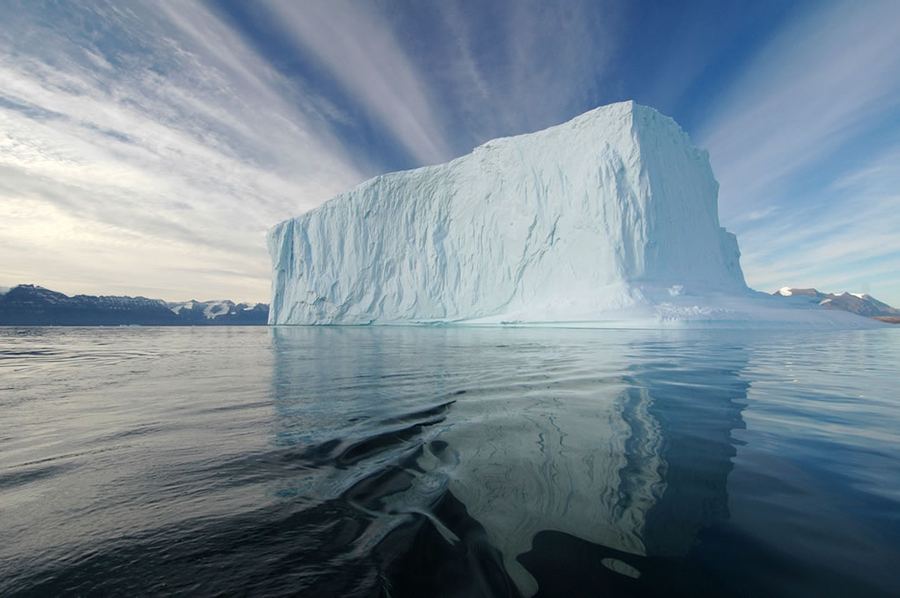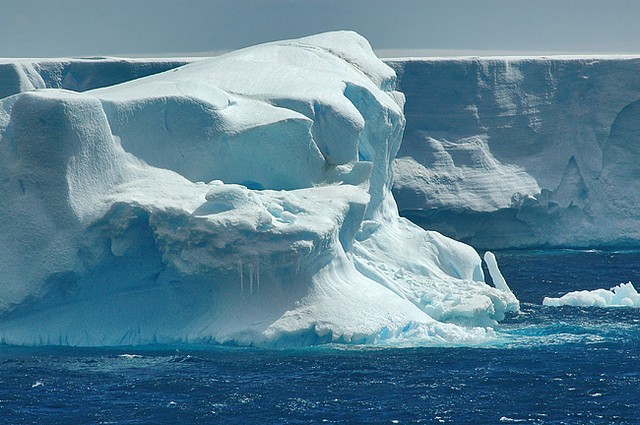Travel with us comfortably
The flora of Antarctica is characterized by the presence of only two species of flowering plants: the kito colobanthus (Colobanthus quitensis) from the Carnation family and the Antarctic meadow grass (Deschampsia antarctica) from the Cereal family. Also in Antarctica there are mosses, lichens, microscopic fungi, algae. The poverty of the local flora is associated with severe weather conditions - the whole of Antarctica is located in the zone of the Antarctic deserts. The most favorable place for plant growth is the Antarctic Peninsula and the islands adjacent to it. The northern part of this peninsula is located beyond the Arctic Circle. Mostly plants can be found on the slopes of the mountains, well warmed by the sun. Colobanthus and meadow grass grow right on the rocks, lichens grow in narrow crevices. Mosses are found only in western Antarctica.
 The fauna of the Antarctic is represented by individual species of invertebrates, birds, and mammals. Currently, at least 70 species of invertebrates have been found in Antarctica, and four species of penguins nest. The remains of several dinosaur species have been found on the territory of the polar region. Free from glaciers and snow remains only 2% of the territory of mainland Antarctica. Most of the fauna of Antarctica is represented in several “arenas of life”: coastal islands and ice, coastal oases on the mainland (for example, the “Banger oasis”), the nunatak arena (Mount Amundsen near Mirny, Mount Nansen on Victoria Land, etc.) and the ice arena shield. Animals are most common in the coastal strip (seals and penguins are found only here). There are also endemics here, for example, the black bell mosquito Belgica antarctica.
The fauna of the Antarctic is represented by individual species of invertebrates, birds, and mammals. Currently, at least 70 species of invertebrates have been found in Antarctica, and four species of penguins nest. The remains of several dinosaur species have been found on the territory of the polar region. Free from glaciers and snow remains only 2% of the territory of mainland Antarctica. Most of the fauna of Antarctica is represented in several “arenas of life”: coastal islands and ice, coastal oases on the mainland (for example, the “Banger oasis”), the nunatak arena (Mount Amundsen near Mirny, Mount Nansen on Victoria Land, etc.) and the ice arena shield. Animals are most common in the coastal strip (seals and penguins are found only here). There are also endemics here, for example, the black bell mosquito Belgica antarctica.
 The Weddell Sea is a marginal sea of the Atlantic sector of the Southern Ocean, off the coast of West Antarctica, between the Antarctic Peninsula in the west and Coates Land in the east. The area is 2920 thousand km², the prevailing depths are 3 thousand m, the maximum - up to 6820 m (in the northern part); the southern and southwestern parts are shallow (up to 500 m). In winter, in the southern part of the sea, the water cools down to -1.8 °C. The southern coast is the edge of the Ronne and Filchner ice shelves, from which giant icebergs break off regularly, every 20-25 years. Most of the year it is covered with drifting ice more than 2 m thick and numerous icebergs. There are whales, seals. The conditions for navigation are extremely unfavorable, and the ice often compresses. Discovered in 1823 by the English expedition of J. Weddell, who named it the Sea of George IV; in 1900 the sea was renamed in honor of its discoverer.
The Weddell Sea is a marginal sea of the Atlantic sector of the Southern Ocean, off the coast of West Antarctica, between the Antarctic Peninsula in the west and Coates Land in the east. The area is 2920 thousand km², the prevailing depths are 3 thousand m, the maximum - up to 6820 m (in the northern part); the southern and southwestern parts are shallow (up to 500 m). In winter, in the southern part of the sea, the water cools down to -1.8 °C. The southern coast is the edge of the Ronne and Filchner ice shelves, from which giant icebergs break off regularly, every 20-25 years. Most of the year it is covered with drifting ice more than 2 m thick and numerous icebergs. There are whales, seals. The conditions for navigation are extremely unfavorable, and the ice often compresses. Discovered in 1823 by the English expedition of J. Weddell, who named it the Sea of George IV; in 1900 the sea was renamed in honor of its discoverer.
 The Somov Sea is a marginal sea of the Pacific sector of the Southern Ocean adjacent to Victoria Land (East Antarctica). It is located between 150 and 170 ° E, between the Ross and D'Urville seas. Coordinates of the central part of the sea: 60°00" S and 162°00" E The eastern part of the sea is mainly located within the continental shallows, the western part has depths of up to 3000 m. It has an area of 1150 thousand km². To the north lie the Balleny Islands. On the coast of the Somov Sea is the Russian scientific Antarctic station Leningradskaya. Named after the leader of the first Soviet Antarctic expedition - Mikhail Somov. Almost completely the Somov Sea is located within the southern polar circle. Therefore, it is covered with ice for most of the year. For only a few months, the ice cover loses its strength, the continental glacier cracks and sends huge blocks of ice and icebergs afloat.
The Somov Sea is a marginal sea of the Pacific sector of the Southern Ocean adjacent to Victoria Land (East Antarctica). It is located between 150 and 170 ° E, between the Ross and D'Urville seas. Coordinates of the central part of the sea: 60°00" S and 162°00" E The eastern part of the sea is mainly located within the continental shallows, the western part has depths of up to 3000 m. It has an area of 1150 thousand km². To the north lie the Balleny Islands. On the coast of the Somov Sea is the Russian scientific Antarctic station Leningradskaya. Named after the leader of the first Soviet Antarctic expedition - Mikhail Somov. Almost completely the Somov Sea is located within the southern polar circle. Therefore, it is covered with ice for most of the year. For only a few months, the ice cover loses its strength, the continental glacier cracks and sends huge blocks of ice and icebergs afloat.
 The Commonwealth Sea is a sea in the Indian sector of the Southern Ocean. Area 258 thousand km² In the southern part, the depth is less than 500 m, in the northern part it is over 3000 m. It is covered with drifting ice, there are many icebergs, including very large ones. On the coast of the Australian scientific stations Mawson and Davis. Ice shores are very mobile in significant areas; as a result of a giant iceberg breaking away from the Amery Ice Shelf in 1964, the coast in Prudo Bay retreated 60-70 km for more than 160 km. Named in 1962 by members of the Soviet Antarctic expeditions to commemorate the joint research work of expeditions of various states in the Antarctic.
The Commonwealth Sea is a sea in the Indian sector of the Southern Ocean. Area 258 thousand km² In the southern part, the depth is less than 500 m, in the northern part it is over 3000 m. It is covered with drifting ice, there are many icebergs, including very large ones. On the coast of the Australian scientific stations Mawson and Davis. Ice shores are very mobile in significant areas; as a result of a giant iceberg breaking away from the Amery Ice Shelf in 1964, the coast in Prudo Bay retreated 60-70 km for more than 160 km. Named in 1962 by members of the Soviet Antarctic expeditions to commemorate the joint research work of expeditions of various states in the Antarctic.



